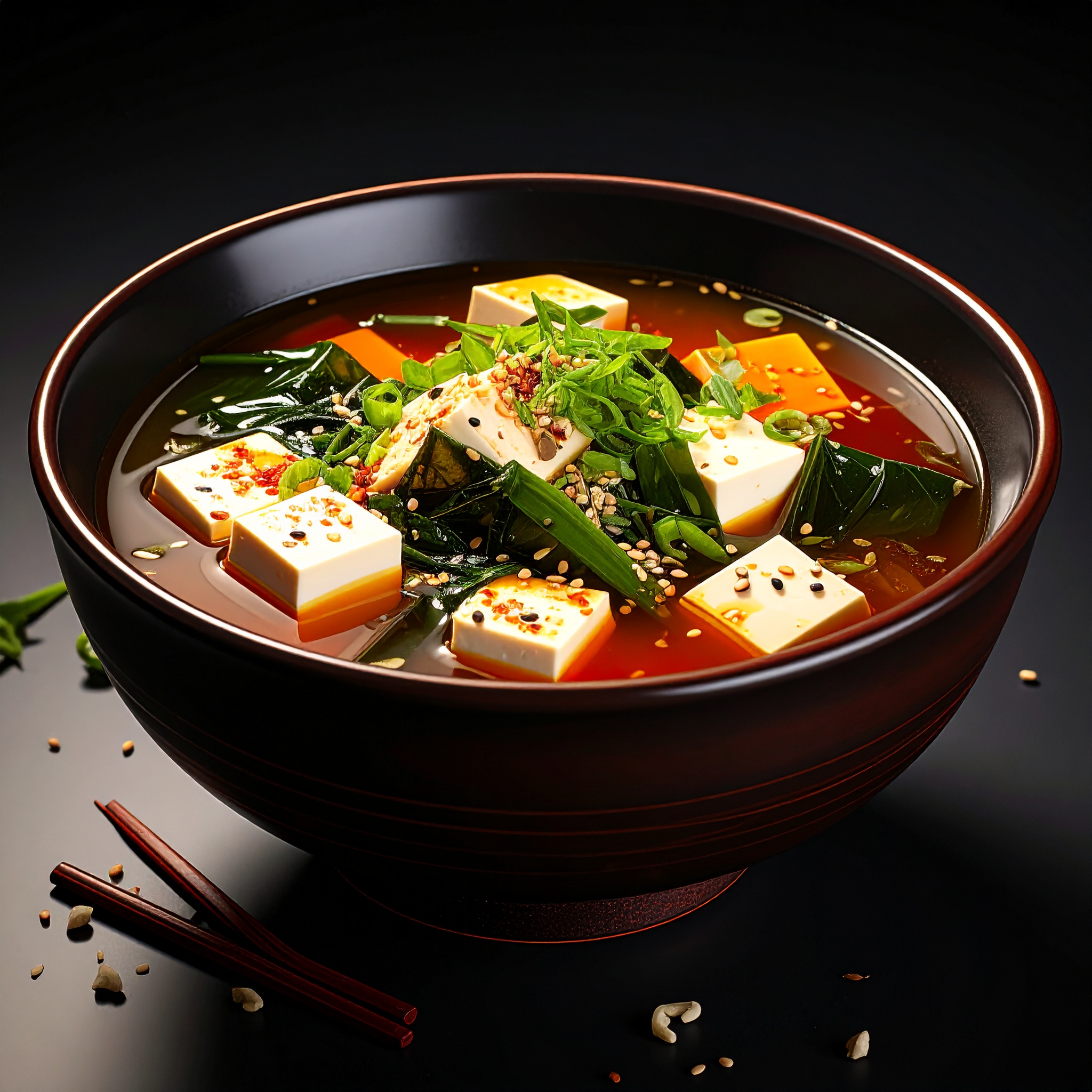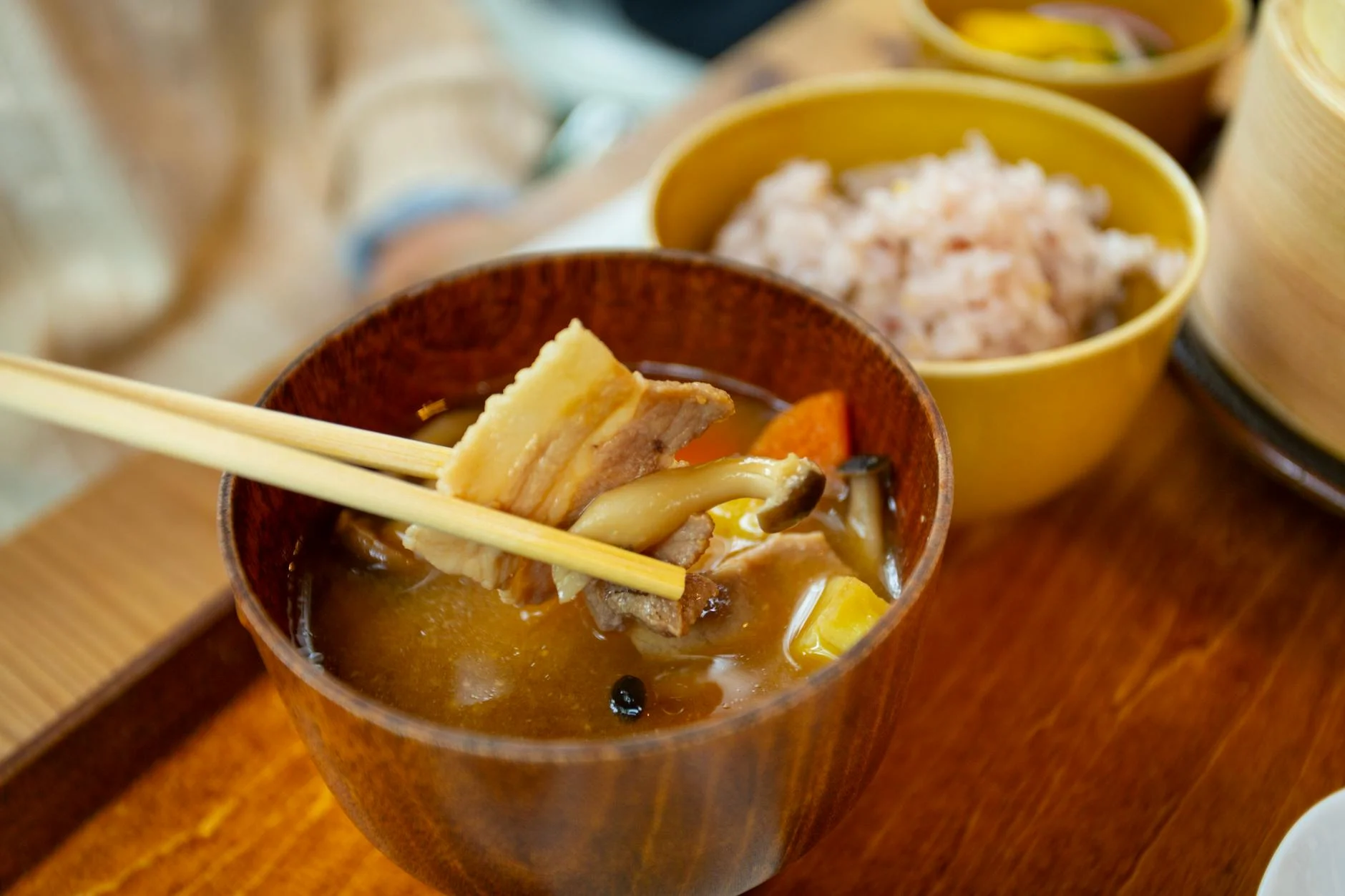For many visitors to Japan, the most enduring memories are not always of iconic landmarks or luxurious meals. Sometimes, it is the quiet simplicity of a Japanese breakfast that leaves the deepest impression. A bowl of steamed white rice, grilled fish, pickled vegetables, and gently rising steam from a bowl of miso soup—visually modest, yet rich with cultural depth. This unassuming meal speaks volumes about the rhythms of Japanese life and the mindfulness embedded in daily rituals.
While Japan offers both Western- and Japanese-style breakfasts, the traditional washoku morning meal remains prevalent in homes and inns across the country. At its center is miso soup. The ingredients vary by region and season—tofu, wakame seaweed, daikon radish, aburaage (fried tofu)—but what unites them is the delicate aroma of dashi and miso gently infusing the quiet of the morning.
Miso soup is far more than a side dish. It warms the body, calms the stomach, and gently signals the beginning of a new day. On mornings when fatigue lingers, a sip of miso soup offers quiet replenishment—a comforting ritual so natural to the Japanese that it often goes unnoticed. For international travelers, however, it becomes a revelation: a new way to understand wellness, simplicity, and cultural harmony.

One international guest once described the miso soup served at a traditional ryokan breakfast as “like eating the air itself.” It does not overwhelm the palate, nor does it compete for attention. Instead, it complements and harmonizes with the rest of the meal. Steamed white rice, salted grilled salmon, simmered vegetables, and a delicate rolled omelet—all come together in balance, with the miso soup gently enveloping the ensemble. This composition embodies the Japanese philosophy of culinary harmony.
Seasonality also plays a central role in Japanese breakfasts. In summer, dishes may include chilled tofu or lightly pickled cucumbers; in winter, miso soup rich with hearty root vegetables or a serving of roasted sweet potato. These seasonal selections are not only nutritionally attuned but reflect a uniquely Japanese sensitivity to climate, bodily rhythms, and the changing pace of life.
Even the rice carries symbolic weight. Perfectly steamed white rice—fluffy, subtly sweet, and fragrant—frequently surprises foreign guests with its depth of flavor despite its simplicity. While some households now incorporate brown rice or multigrain blends, the foundation remains unchanged: freshly cooked rice paired with miso soup is the soul of the Japanese morning table.
In Japan, the act of eating is often accompanied by a quiet sense of gratitude—especially at the start of the day. This is one of the most subtle yet defining features of Japanese breakfast culture. The word itadakimasu, offered before each meal, conveys a spirit of respect and appreciation. The way chopsticks are handled, the thoughtful choice of dishware—each reflects an aesthetic sensibility that extends far beyond the food itself and into the realm of cultural values and mindfulness.
At ryokan inns and refined hotels across Japan, the traditional washoku breakfast becomes more than a meal—it is an immersive experience. Local miso, regional vegetables and fish, heritage rice varieties, handmade ceramic bowls, and wooden chopsticks all come together to offer guests a multi-sensory introduction to the unique spirit of a place. Quietly elegant and deeply intentional, this breakfast speaks to the country’s values with understated eloquence.
Though modern life has led many to simplify or skip breakfast during the workweek, the cultural appreciation for a well-prepared morning meal endures—particularly on weekends or while traveling. At the heart of this tradition remains miso soup. Its warmth, familiarity, and gentle flavor continue to evoke a sense of home and calm, symbolizing the essence of Japanese domestic comfort.

The depth of flavor in miso soup begins with its dashi—crafted from ingredients such as katsuobushi (bonito flakes), kombu (kelp), or niboshi (dried sardines). A single taste leaves a lasting impression. Equally diverse is the miso itself: red, white, or blended varieties, each reflecting the nuances of a particular region or household. In this way, miso soup becomes more than a staple—it becomes a quiet reflection of place, tradition, and family.
Today, as global interest in fermented foods and gluten-free diets continues to grow, Japanese miso and miso soup are receiving renewed attention. Rich in nutrients, naturally umami-laden, and supportive of digestive health, miso soup is increasingly valued as a holistic food—balancing well-being and flavor in a way that feels both ancient and modern.
On a tranquil morning while traveling in Japan, beginning the day by slowly sipping a warm bowl of miso soup offers more than nourishment. It introduces the rhythm of Japanese life—a culture rooted in simplicity, seasonality, and respect for time. A seemingly modest meal becomes a moment of reflection, grounding both body and spirit, and enriching the memory of the journey.
That single, quiet bowl at sunrise may well be the most authentic first doorway into the heart of Japan.




